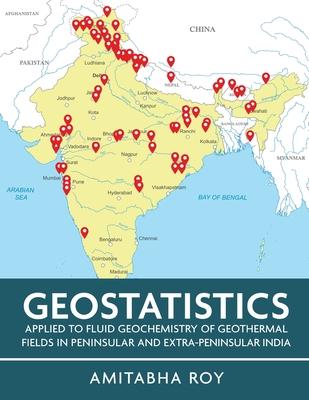Spatially dependent multivariate geothermal data spread across two distinct regions of diverse geologic-tectonic settings, one from a 2400 km-long arcuate belt of the tectonically active Extra-Peninsular Himalayan region and the other from Late-Precambrian or Proterozoic mobile belts in the Central Highland in an otherwise stable landmass or shield of Penininsular India, were subjected to robust multivariate statistical methodologies such as Principal Component Analysis (PCA), Exploratory Factor Analysis (EFA), Correspondence Factor Analysis (CFA), and Multiple Regression Analysis, with the ultimate goal of uncovering hidden patterns to establish the origin of geothermal hot springs. The model study identifies two significant fluid geochemistry suites: 1) the overall salt assemblage and concentration of Cl-HCO3-SO4-Na-F or chloride-rich water suggestive of the existence of a hydrothermal magmatic system operating in the geotherms of extra-peninsular India; and 2) peninsular springs of K-Na-HCO3 bicarbonate-rich waters with low SO4-content and relatively higher contents of HCO3 compared to other anions SO 4, Cl, and F suggestive of a non-magmatic origin. Trend surface mapping of raw data for chloride (Cl) and bicarbonate (HCO3) was done using a GIS tool.

Geostatistics Applied to Fluid Geochemistry of Geothermal Fields in Peninsular and Extra-Peninsular India (Full Colour)
Spatially dependent multivariate geothermal data spread across two distinct regions of diverse geologic-tectonic settings, one from a 2400 km-long arcuate belt of the tectonically active Extra-Peninsular Himalayan region and the other from Late-Precambrian or Proterozoic mobile belts in the Central Highland in an otherwise stable landmass or shield of Penininsular India, were subjected to robust multivariate statistical methodologies such as Principal Component Analysis (PCA), Exploratory Factor Analysis (EFA), Correspondence Factor Analysis (CFA), and Multiple Regression Analysis, with the ultimate goal of uncovering hidden patterns to establish the origin of geothermal hot springs. The model study identifies two significant fluid geochemistry suites: 1) the overall salt assemblage and concentration of Cl-HCO3-SO4-Na-F or chloride-rich water suggestive of the existence of a hydrothermal magmatic system operating in the geotherms of extra-peninsular India; and 2) peninsular springs of K-Na-HCO3 bicarbonate-rich waters with low SO4-content and relatively higher contents of HCO3 compared to other anions SO 4, Cl, and F suggestive of a non-magmatic origin. Trend surface mapping of raw data for chloride (Cl) and bicarbonate (HCO3) was done using a GIS tool.